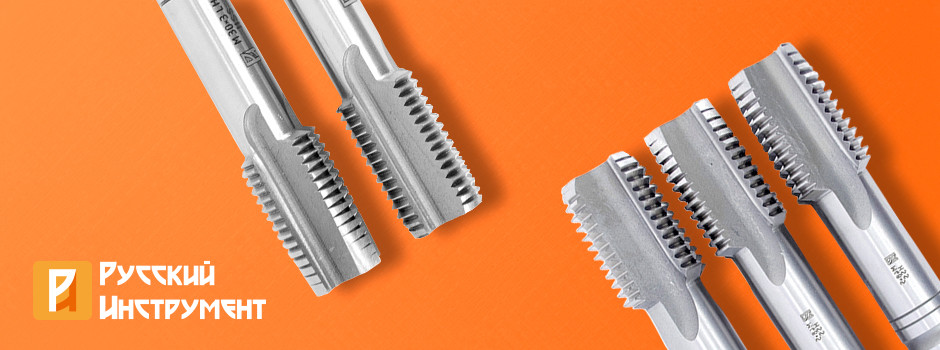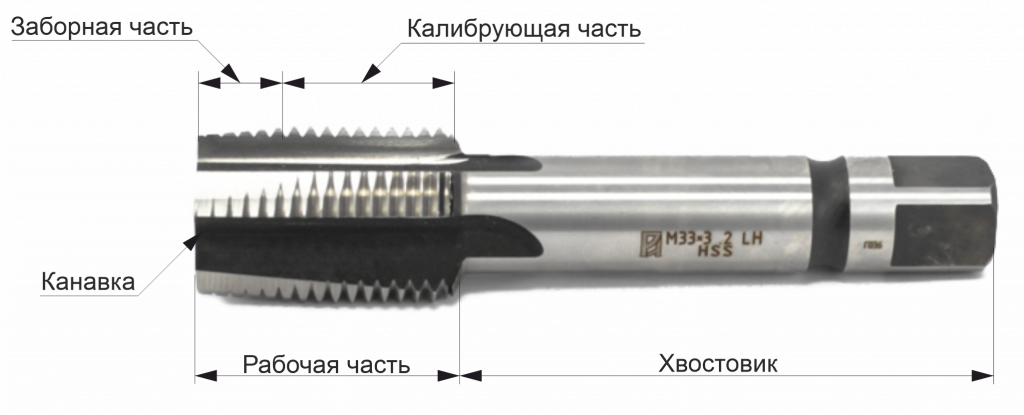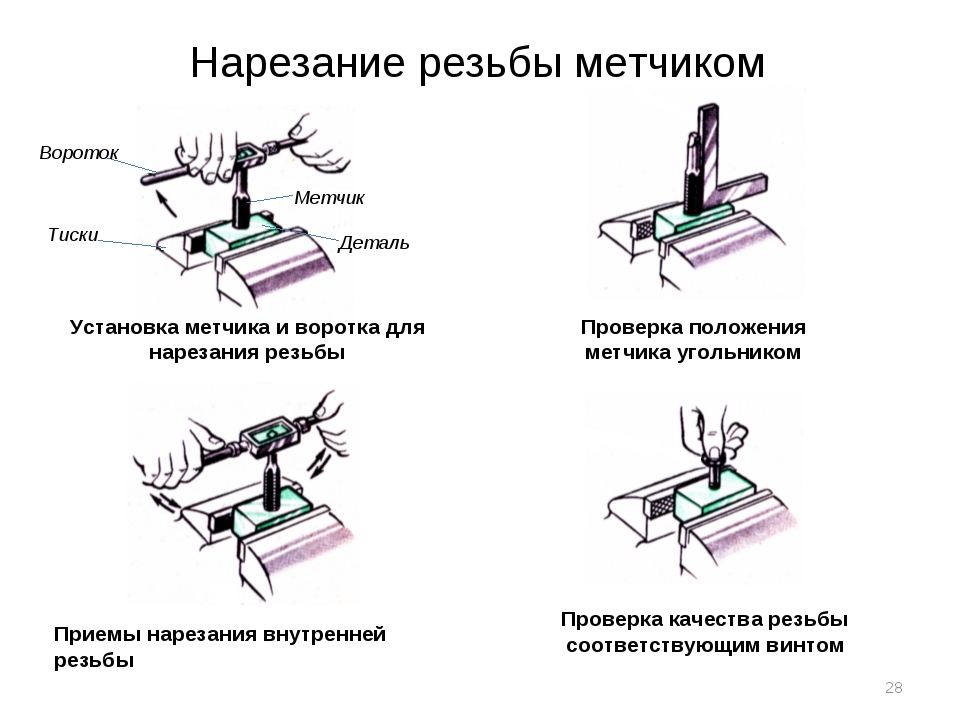
Taps: design and features of use
A tap is a tool that is needed to create and calibrate an internal metric or inch thread. Depending on the type of tool used, single-pass machine-manual taps are distinguished, as well as tools that cut threads in three passes. Taps are used both in everyday life and in the professional sphere. The creation of the thread is carried out by turning the tap with reciprocating movements in a blind or through hole. To determine the diameters of the holes for threading, the provisions of the GOST 19257-73 standard are used.
Tap design features
The tap has the shape of a screw with grooves, which are needed for timely removal of the resulting chips. The grooves can be either straight or helical.
The main structural parts of the tap and their purpose
Let's analyze which main parts the tap consists of:
- the working part of the tap, which is directly responsible for threading. The components of the working part are the intake and calibration sections,
- the shank, which is necessary for fixing the tap in the collar or chuck during threading,
- the core, which is the inner part of the tap body,
- cutting teeth, which are also called feathers. They are arranged in a circle and are necessary for cutting through metal. The correctness of their geometry plays an important role,
- grooves that are made in the form of recesses between the teeth.

Working part of the tag
The main part of the tool is made of high–strength materials - alloy, tool, high-speed steel, which ensures productive work and a long service life.
- The intake (or, as they say) cutting element is located in front of the working part and has the shape of a cone. It is he who is responsible for rough threading. This process is the cutting of thin metal layers along the contour. Thus, the thread profile is formed, and the chips are removed through the grooves. The intake part of the tap determines how accurate the thread will be. The production of the cutting part of the tap is carried out according to the profile scheme (for conical and calibrating tools) or according to the generator (for machine, wrench and other types of taps).
- The calibration element of the working part is located behind the fence and determines the final appearance and geometry of the thread profile. This site plays the role of a kind of reserve for the overflow. The reverse cone avoids pinching the tap and reduces friction.
Tap shank
As a rule, this section has the shape of a cylinder ending in a square for fixing and transmitting torque. The length of the tail determines the depth to which the hole can be cut.
Types of taps
- Depending on the method of actuation – machine-manual and machine tools. To work with machine-manual taps, you need a collar. Machine taps are used as part of drilling, turning and other metal-cutting machines.
- Depending on the method of threading – universal and complete. Universal allow you to cut threads with a single tool. To do this, there are sections with different geometries on its working part. As the name implies, complete taps are a set of three tools for roughing, intermediate and finishing.
- Depending on the type of holes being processed – taps for blind and through holes. To create blind holes, you need a tool with a cut cone tip that cuts the thread immediately to the full depth. To create through holes, a tool with an elongated conical tip is used, passing into the working part.
- Depending on the hardness of the processed material – taps with grooves and taps with a staggered arrangement of cutting elements.
Preparation for internal thread cutting
Regardless of how you plan to cut the thread on the pipe with a tap, you first need to prepare a hole of the required diameter. This is an important stage, the correctness of which depends on whether you get a tight enough fit of the fastener. To determine the diameters of the holes for threading, the requirements of GOST 19257-73 are used. If it is necessary to create a non-standard thread, then to calculate the diameter of the hole, it is necessary to subtract its pitch from the diameter of the thread. You can find out the parameters of the thread diameter and pitch in the marking of the tap.
How the thread will be cut correctly with a tap depends on the preparation of equipment and consumables for work. Among them must be:
- drilling machine, electric drill, drill,
- countersink for chamfering the edge of the hole,
- a tap or a set of taps of a suitable size,
- collar, vise,
- core, hammer,
- oil for lubrication of the cut area,
- rags.
Algorithm of actions
 Formation of a recess in the place where the future hole is created using a core and a hammer.
Formation of a recess in the place where the future hole is created using a core and a hammer. - Processing of the cutting part of the drill with a lubricant.
- Fixing the drill bit in the machine chuck perpendicular to the surface of the workpiece.
- Fixing of the part in which the thread is cut in a locksmith vise.
- Drilling.
- Chamfering at the entrance to the completed hole.
- Installation of a universal tap or a complete tap No. 1 in the collar and threading according to the principle of 2 turns in the course, 1 turn against the thread. This is necessary to reset the chips.
- Installing the complete tap No. 2, and then No. 3 into the collar and threading according to the principle described above.
How to cut the internal thread with a tap manually and be sure of the quality of the result? To check, you can use a gauge plug, which should be screwed tightly, but without effort.
The company "Русский Инструмент" produces metal-cutting tools. The assortment includes not only taps, but also much more. Full catalog of the company "Русский инструмент" on Enex
